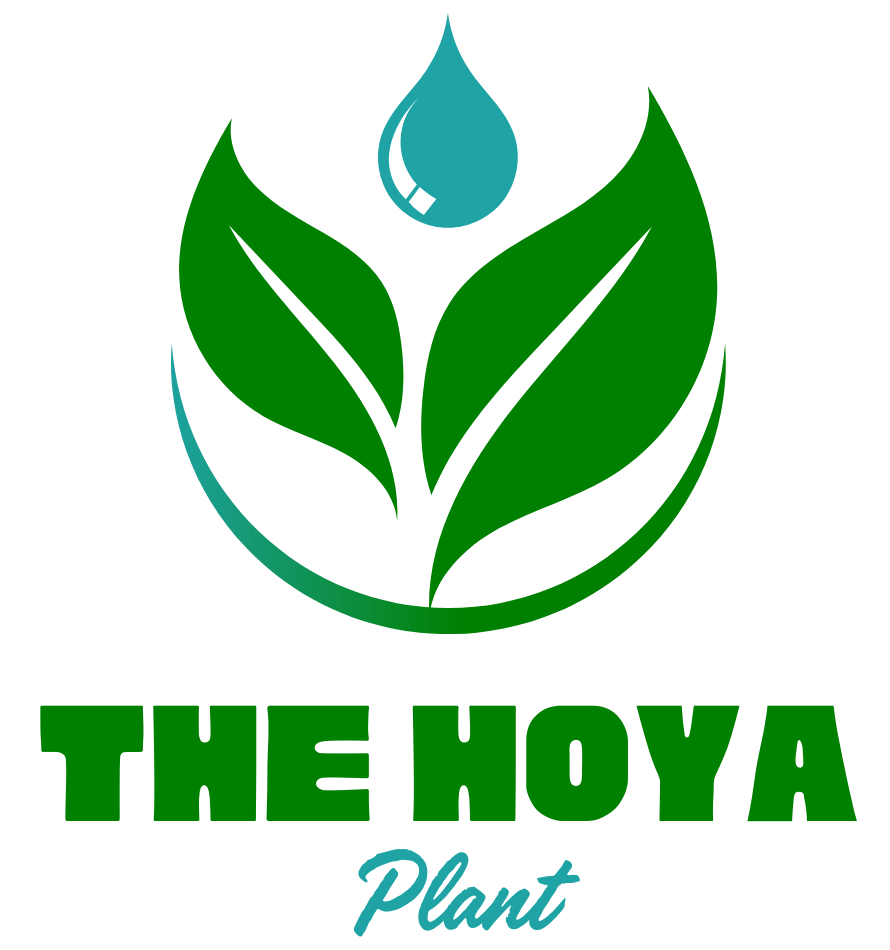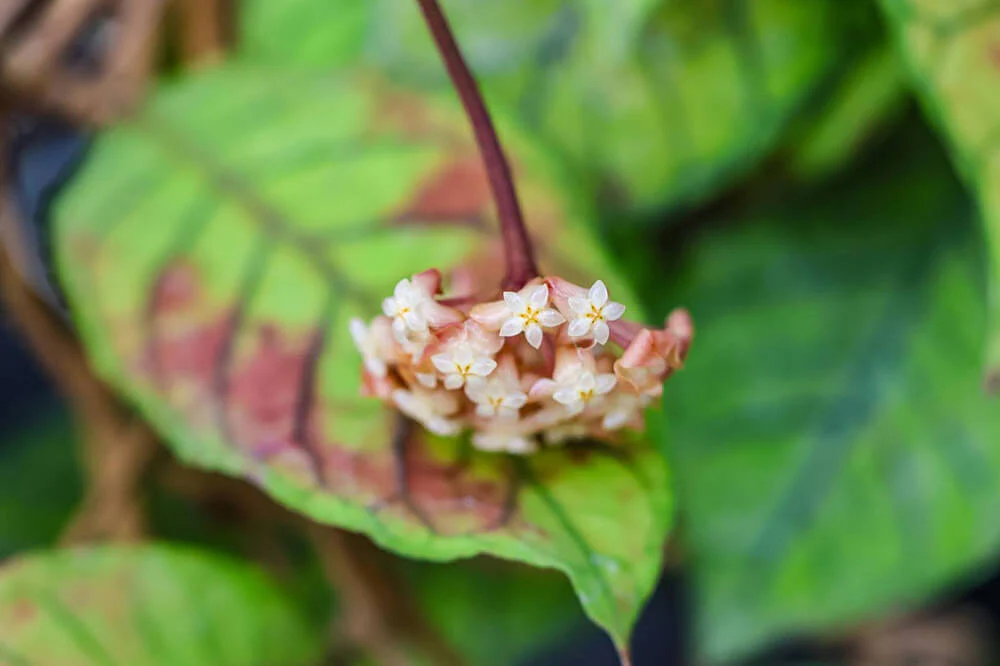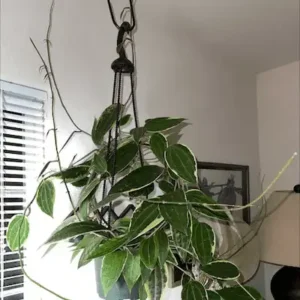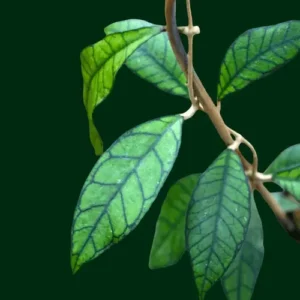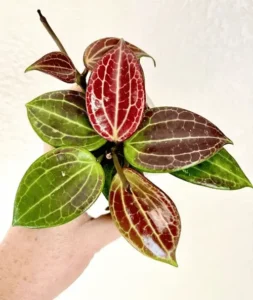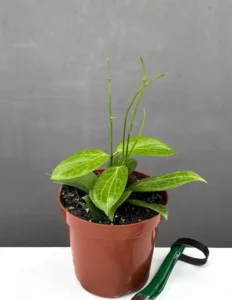Introduction
Hoya plants’ problems and solutions include addressing overwatering, insufficient light, and pests. Learn how to prevent yellowing leaves, root rot, and pest infestations to keep your Hoya thriving and healthy. Hoya plants, often called wax plants, are loved for their striking foliage, and face some common problems. Though generally easy to care for, they can encounter a few typical issues that may hinder their growth. Root rot, leaf yellowing, and insect infestations like mealybugs can all arise if the plant’s needs aren’t properly met. Moreover, recognizing these common problems and knowing how to resolve them is key to ensuring your Hoya plant stays vibrant and healthy.
Detailed Analysis of the Hoya Plant Problems
Here is a detailed analysis of these common problems that are related to the hoya plants.
Dark Spots
Dark spots on the leaves are fungal infections caused by overwatering might be caused by temperature fluctuation. The plant was harmed by these dark patches as they progressively formed.
Aphids, Spider mites, and Mealybugs
-The hoya (plant) is harmed by mealybugs, spider mites, and aphids. Root rot may result from the container holding too much water if the plant is not kept root-bound. Additionally, overwatering may prevent the plant from flowering.
-Thinning, brown, or wrinkled leaves can mean that the plant is allowed to dry too much between watering.
Mold and Fungus
-Mold and fungus which are the silent invaders discoloration or powdery spots on leaves are also common problems. It is also susceptible to a range of common ‘sap-sucking’ houseplant pests including aphids, mealybugs, scale and spider mites.
-Hoya fungal leaf spot and other fungal or bacterial diseases commonly affect this type of plant which is caused by brown spots on the leaves. However, these are the general problems with the best solutions.
Root Rot
Root rot is a common disease caused by overwatering and poor drainage.
Yellow or Wrinkled Leaves
Leaves turning yellow due to overwatering and lack of light. One of the most common problems related to hoya plants.
Wilted, Wrinkled, or Shriveled Leaves
Wilted, wrinkled, or shriveled leaves are frequently signs of a serious water deficit. However, water your plant adequately to ensure healthier development in the future.
Other Hoya Plant Problems
-Yellowing, leaf spots, excess water on top leaves, sooty mold (develops on the leaves’ sugary, sappy leftovers), light and temperature angles, scale insects, pests and root rot which are the silent killers and occurs when the soil is too moist.
-Among the insects drawn to these species are whiteflies. However, root rot and leaf drop can result from overwatering. These are all the common “sap-sucking” insects in the garden.
-Caterpillars, spider mites, leafhoppers, yellow edges, dark blotches, leaf beetles, mealybugs, thrips, and aphids are also some other common problems.
-Hoya plants’ common problems and solutions include avoiding overwatering to prevent root rot and ensuring well-draining soil.
Solutions
Although hoya plants are relatively low-maintenance houseplants, they can suffer from several common issues, including pests, overwatering, underwatering, and low humidity. However, Many problems can be avoided by closely monitoring their environment and care requirements. However, identify the issues early and make changes to restore your hoya’s health. Hoyas create lovely, blooming houseplants when given the proper care guide. Hoya plants’ common problems and solutions feature the following key aspects root rot, yellowing or wilting leaves, leaf spots, etc.
Detailed Analysis of Solutions
Here are some general solutions to care for hoya plants. A detailed analysis of the solutions is described in the below section for the better growth of hoya plants in the future. These solutions have great benefits for those who are hoya plant lovers.
Choose the Suitable Pot
-Firstly, choose the right pot which is very important, regular plastic containers are best. Moreover, choose a manageable pot according to the hoya size.
-Secondly , choose the material that draws moisture from the soil as hoyas are badly affected by overwatering and root rot.
Leaf Spots, Dark Spots, and Root Rot
Solutions
-To prevent leaf spot infections, avoid overwatering and ensure the plant has good air circulation, keep leaves as dry as possible. Maintain proper pruning of your shrubs and trees to allow for adequate canopy ventilation. However, these are the best solutions to prevent hoyas from leaf spot infection-like problems.
-In case of dark spots apply cinnamon and other fungicide, minimize watering and let your plant grow. However, for better growth, longer watering intervals are a must for these beautiful houseplants.
-Make sure the soil drains well and the plant isn’t overwatered to avoid root rot.
Wrinkling, Yellowing, and Falling Off Leaves
Solutions
-To prevent yellowing, wrinkling, or dropping off leaves and scale insects, isolate the plant and spray it with fresh water and rubbing alcohol.
-To avoid yellowing or wrinkled leaves, the best way is to water the plant moderately.
-Provide enough humidity and light to your houseplant for enough growth.
-Indirect sunlight is very beneficial for the blooming of hoya plants.
-If you place this plant at a place where direct bright sunlight comes, leaves will automatically turn yellow.
-To avoid all the above issues, replace the soil with fresh and clean soil. Moreover, once you thoroughly clean the plant, it will automatically grow better.
Mold and Fungus Diseases
Solutions
-To prevent mold and fungs cover and scrub the affected area with bleach, a fungicide, a detergent, or water and then dry it.
-Before remodeling, remove any residue from the cleaning chemical mixture and thoroughly dry the surface of the room where the houseplant is kept.
-Use air conditioners and dehumidifiers to lower the amount of moisture in the air. Moreover, keep the humidity inside your home at or below 60%.Insulate cold surfaces including windows, floors, and outside walls to lessen condensation.
-Dry damp areas in a day or two to prevent the growth of mold.
Aphids, Mealybugs and Spider Mites
Solutions
-Use neem oil, check plants frequently, keep leaves clean, apply rubbing alcohol, steer clear of overwatering, and introduce natural predators to ward off aphids, mealybugs, and spider mites.
-Aphid infestations can be avoided by maintaining target plants well-watered, fertilized, and healthy, as well as by eliminating host weeds and neglected, stressed plants. Moreover, aphid infestations originate locally, aphids can be sprayed with organic garlic and chili sprays, squished with fingers and thumb, or eliminated from plants with a water jet.
-Most “soft” insecticides and biological agents, which are easily accessible to home gardeners, can be used to control mealybugs.
–Leptomastix dactylopii and Anagyrus fusciventris are two parasitic wasps that can be released into an affected area to suppress mealybug populations effectively.
| FAQs What’s wrong with my Hoya plant? If you notice, there is something wrong with Hoya. In this case, these problems may be the root cause. Root rot is a common disease caused by overwatering and poor drainage. Leaves turning yellow due to overwatering and lack of light. Wilted, wrinkled, or shriveled leaves are frequently signs of a serious water deficit. What does an overwatered Hoya look like? An overwatered hoya looks like a distorted or disturbed plant with yellowing, wrinkling, wilting, or leaf dropping. Water the plant moderately to avoid root rot and other diseases like them. How do I fix my Hoya plant? Choose the right pot which is very important. Choose the material that draws moisture from the soil as hoyas are badly affected by overwatering and root rot. Water the plant moderately. Provide good fertilization for proper and effective foliage. Provide enough humidity and light for your houseplant to grow. Indirect sunlight is also very beneficial for the blooming of hoya plants. |
Conclusion
In conclusion, while Hoya plants may encounter issues like overwatering, insufficient light, and pests, these problems are manageable with proper care. Hoya plants’ common problems and solutions include avoiding overwatering to prevent root rot and ensuring well-draining soil. You can keep your Hoya plant thriving by ensuring appropriate watering practices, providing adequate light, and addressing pests promptly. However, a little attention to its needs will help it stay healthy and continue to bloom beautifully.
